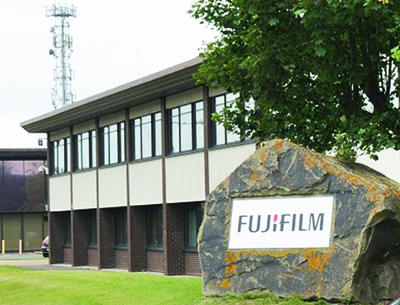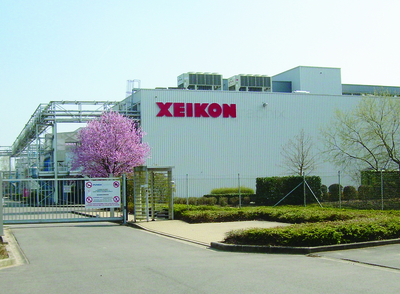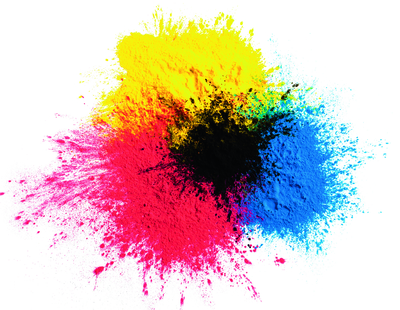Digital printing uses totally different colourants to analogue methods. The technologies vary and there is a totally different supply model, with the great majority tied to the equipment supplier. There are inks and toners; dyes and pigmented inks; UV, water-based and solvent inks; powder and liquid toners; the respective manufacturers make it a difficult choice for new users. By Sean Smyth.
The first thing offset or flexo printers moving into digital notice is the high price of toners or inkjet ink compared to the inks they are used to buying. The next is that they have to buy the consumables from the equipment supplier (except for some of the wide format inkjet models) and there is no choice.
Suppliers argue that the raw material ingredients are more expensive than for analogue inks and the formulation of a consumable has to be finely tuned to the particular press and application. Usually the quantities consumed and delivered are lower than in analogue printing, and there can be a complicated supply chain between manufacturer and end user. This means there are fewer economies of scale. In inkjet a printhead manufacturer may command a licence from the inkmaker to qualify an ink in the head, and provide a detailed waveform to optimise the print quality from the head. There are high development and testing costs in launching a new digital ink while most analogue inks have been around for many years without major changes.
These are sound reasons, and there are no signs that the selling price (or click charge) will fall significantly any time soon, but the good news is the overall cost of digital printing is falling as the performance and reliability of the presses get better.
The science bit
There is a lot of science in inks and toners. Toners can be finely divided coloured thermoplastic resin particles, or liquid in the cases of HP Indigo and Océ InfiniStream. Toner comprises a thermoplastic polymer binder, colourant, charge control agent, release additives and additional ingredients to assist with fusing, manufacture, print quality and performance. It forms charged particles that are attracted to the latent image on the surface of the photoconductor. This is development, the process of creating the toner image that is the most critical stage, requiring careful integration of materials, electrostatics, mechanics and electronics. Powder particles, between 5 to 10 microns, are free-flowing and are transferred to the substrate under pressure to form the image. Toners are mostly made using MPT (melt pulverisation toner) with a growing proportion of CPT (chemically prepared toner) materials. The liquid toners are suspended in a carrier which greatly helps the transfer but has to be removed before the delivery, manufactured in a similar way to paste inks.
In melt pulverisation powders, such as Xeikon, the binder, colourant and additives are mixed and heated to form a homogenous mixture which is cooled and pulverised, ground to a size and packed into a cartridge or toner bottle. Chemically prepared toners are made in several ways, suspension polymerisation, emulsion aggregation, solvent dispersion, limited coalescence and chemical milling techniques being commercialised.
The claimed benefits of chemical toners are based on a smaller, more even particle size. Xeikon’s toner plant is one of the largest colour toner sites in the world, producing over 2000 tonnes per year in Heultje, in Belgium. Xeikon consistently improved its toner to give a better quality end result with desired no taint and is FDA approved. It has developed advanced methods of pulverising the formulations, using grinding and high pressure air collisions to break the raw toner into particles. It then adds some final ingredients to give the desired transfer and charging characteristics, then there is a proprietary process that smoothes and forms the toner – a key step Xeikon will not share. HP Indigo has greatly extended its toner (electroink) plants in Kiryat Gat, in Israel, and in Singapore.
 FujiFilm Speciality Ink Systems facility at Broadstairs, in Kent
FujiFilm Speciality Ink Systems facility at Broadstairs, in Kent
A jet of ink
Inkjet inks can be water-based, solvent-based or UV curing. They have to perform in storage, in the printhead and on the substrate. The jetted drop has to be the correct size and mass, fired at the right velocity (too slow distorts the image, too fast it splashes), and it has to wet the surface correctly, to ensure drops do not spread too much or too little. Then the ink has to dry. These effects happen in milliseconds after printing. The development labs at inkjet ink manufacturers have printhead rigs where scientists examine the jetting characteristics from different heads, and they can determine the performance of different ingredients or treatments.
Pigmented inks are used in labels and packaging, dispersed to small particle sizes, from some 50 to 200 nm in diameter. Ejecting particulates through the inkjet nozzles at high velocity puts many restrictions on the ink, particularly in viscosity and surface tension which can be problematic in making low viscosity ink with high pigment loading. Large particles may plug the jets and damage the printhead. If left to stand eventually all pigmented inks will settle out to some degree, hence the requirement to shake the pack before use. Inkmakers can build in separation resistance by controlling the pigment size distribution, density, surface chemistry and the dispersants used. The dispersions are made colloidally stable to avoid agglomeration and settling out, achieved by modifying the pigment surface, stabilising particles by steric or charge repulsion.
Such chemical treatments, with improved physical dispersion technology to wet the pigment, break down agglomerates and avoiding flocculation, allow higher pigment loadings. Mechanical dispersion milling and grinding methods are improving, with new techniques such as ultrasonics to improve the physical dispersing and in some cases to minimise the final pigment particle size distribution. The Landa nanoinks use proprietary technology to produce high loadings of very small pigment particles to give excellent optical properties of the printed ink film.
Compliance
Ink and toner used in food (and tobacco) packaging has to comply with ever more strict legislation to ensure that no components can migrate into the foodstuff, or taint the product. There are lists of approved ingredients that manufacturers can use in formulations (and banned ingredients) from reputable suppliers who will guarantee compliance. In use, converters need to make sure they are following good manufacturing practice across all production stages. In UV, the supply of low migration inks is a major competitive edge for ink manufacturers, for example Durst offers low migration inks from SunJet that are being used to print lidding films for dairy products.
Jon Harper-Smith, marketing manager at FujiFilm Speciality Ink Systems (which supplies the ink for the FFEI/FujiFilm Graphium press), summarises the requirements for inkjet inks thus, ‘Inkjet ink is extremely important, because ink forms the only thing that the final customer and the end user actually wants – the printed image. We demand a great deal from the ink. It has to carry the brand image and therefore needs to be able to produce the colour and appearance accurately. It carries legal notices and barcodes, so it will need to form fine detail high resolution images. For a label ink, it also needs to withstand a harsh environment, coping with physical abrasion from transport all the way through to chemical resistance to the product that is ultimately packed. Throughout its life, it has to maintain its colour and overall appearance.’

Xeikon’s dedicated toner production plant in Heultje, Belgium
No comparison
Formulators are consistently improving the properties of inks and toners. HP Indigo introduced the first silver in 2013 and Xeikon reduced fusing temperatures with the ICE toners. In inkjet, the pigment loading is getting higher, innovations such as using water or solvent as diluents in UV ink, while maintaining the stability, help performance and quality. In 2014, the volumes of ink and toner are much below the volumes of litho or flexo ink, so it is not surprising that the price is higher.
A straight comparison between the cost of a litre of flexo and inkjet ink, or a kilo of litho ink and toner is not really meaningful. The supply model is different, and provider and user are really in partnership. Both need to maximise the volumes to make money in digital printing and the overall comparison of production cost should be what is compared. This is also beyond just ink on substrate, but covers the complete conversion, supply and use stages and it is here digital can offer significant economic benefits, despite the higher toner or ink prices.






